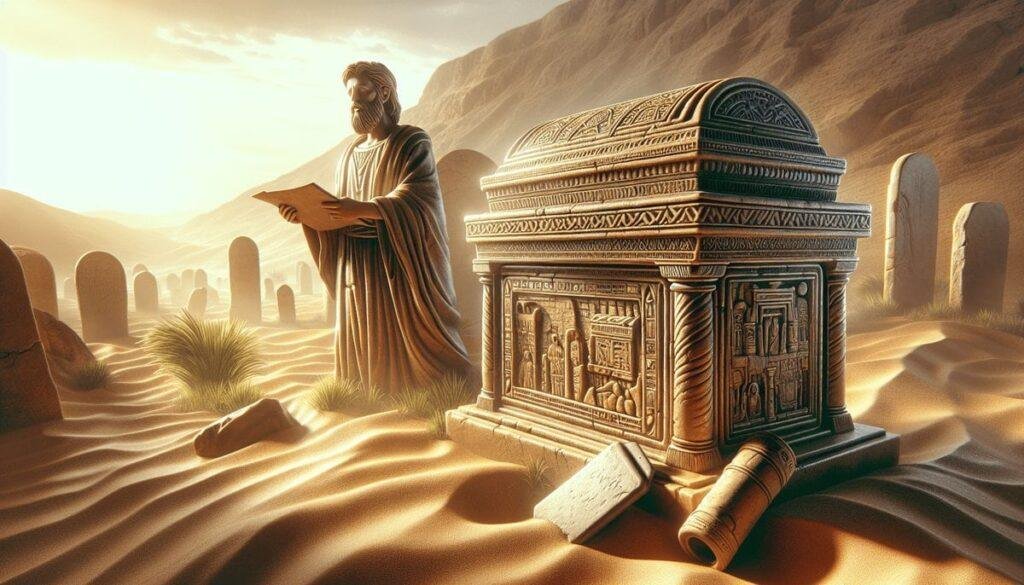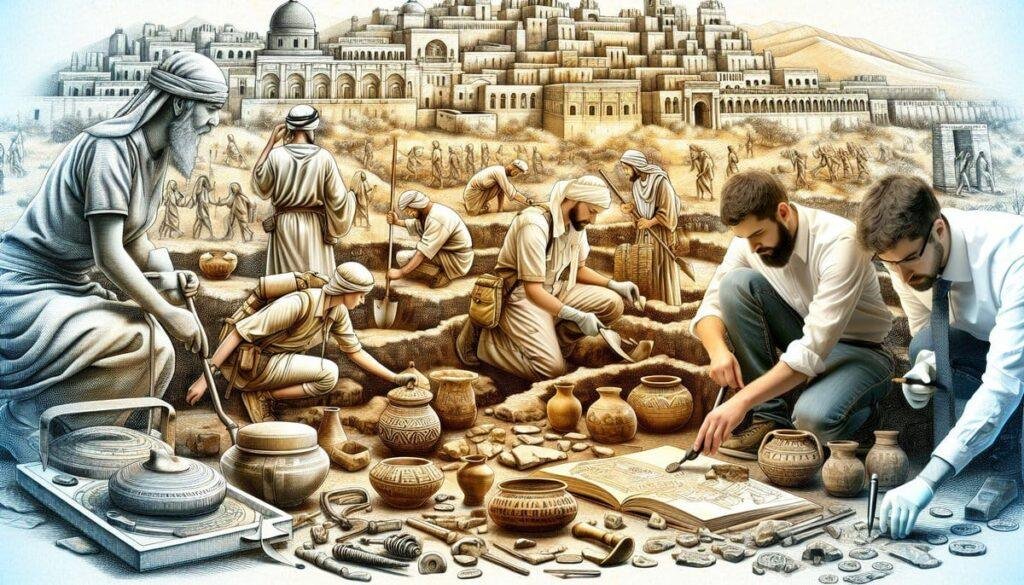What draws you to the idea of leadership? Is it the power to direct? The duty to guide? Or maybe it’s the inherent responsibility to bring people together, especially when they’re scattered like leaves in the wind. When we consider the concept of leadership, reflections on ancient communities—specifically the Qumran community—offer fascinating insights. With its intriguing ruins and a history that’s intertwined with the legendary Dead Sea Scrolls, the story of the Qumran community, especially around the collapsed wall, resonates deeply. Let’s unpack what it means to be a chosen leader, and how leaders unify scattered individuals, even in the aftermath of collapse.
Understanding the Qumran Community
The Qumran community thrived near the northwest shore of the Dead Sea, emerging around the second century BCE and continuing until the first century CE. This place wasn’t just any geographic spot; it was a haven—an ancient retreat for a group known as the Essenes. These folks took their spiritual lives extremely seriously, and they dedicated themselves to an ascetic lifestyle, focusing on purity and communal living. Quite a commitment, huh?
The community is often linked to the Dead Sea Scrolls, a collection of texts that hold remarkable significance. These scrolls reflect a wide range of thoughts and beliefs—from biblical texts to other religious writings. They reveal not only their religious beliefs but also their hopes, fears, and struggles.
But what happens when such dedicated communities face collapse? What does it take to unify people in the wake of disruption?
The Meaning Behind the Collapsed Wall
When you visit Qumran today, one of the most striking features is the remnants of its wall. The collapsed wall isn’t just a physical structure; it’s a potent symbol of upheaval. Walls traditionally represent safety and security, boundaries that define a community. A collapse, then, signifies a breach of safety—the shattering of the lifestyle these communities cherished.
But let’s dig deeper. The collapse might indicate a broader theme throughout history: the fragility of community and the need for leadership to bring people together when all seems lost. Think of it: leaders have the daunting task of rebuilding trust, creating cohesion, and nurturing a sense of belonging, all challenges that the Essenes grappled with.
The Role of Leadership in Times of Crisis
As you reflect on the essence of leadership, the notion of a “chosen leader” emerges. This is not merely a title but a symbol of hope. A chosen leader is someone who can breathe life into a fractured group, instilling purpose and direction.
Characteristics of a Chosen Leader
What sets these leaders apart? They possess qualities that unify rather than divide. In an age when individualism often overshadows the collective, chosen leaders focus on fostering relationships within the community. Here are some important characteristics that stand out:
- Empathy: Understanding others’ experiences and feelings creates a connection—this is crucial when people feel scattered.
- Vision: A forward-thinking leader crafts a vision that inspires hope, drawing individuals together, transcending despair.
- Wisdom: Knowledge and understanding, especially of ancient texts and lessons, provide a foundation for sound decision-making.
- Integrity: Trustworthiness glues communities together; when people trust their leaders, they unite behind a common cause.
Recognizing these traits in the historical context of the Qumran community sheds light on how a leader could have responded to their hardships.
Historical Context: The Qumran Community and Their Challenges
The Qumran community faced numerous challenges: internal strife, external threats, and the eventual dissolution of their lifestyle. The Roman influence loomed ever closer, and the societal changes of the era potentially threatened their way of living. Before their existence crumbled, the Essenes must have looked for guidance—a figure who could lead them through turmoil.
Understanding the details of their struggles can reveal how a chosen leader could resonate with them. The history of the Maccabean Revolt, which offered a narrative of resistance, and the political turmoil of the Roman Empire could provide context for leaders to rise in support of their community. Still, the essence of a leader was crucial: one must unify, even in chaos.
Theological Insights from the Dead Sea Scrolls
Now, let’s take a brief jaunt into theology. The Dead Sea Scrolls hold much more than just historical value; they unravel a tapestry of beliefs that reveals the Essenes’ understanding of leadership and community.
- Community Rule (1 QS): This document outlines the community’s structure and governance, emphasizing leadership qualities that stress unity and shared values. It serves as a foundational text that could assist in shaping the ideal leader.
- War Scroll (1QM): This scroll speaks of conflict and the hope for a messianic leader, potentially the “Chosen One” who would unify the faithful. Such expectations were not only for physical strength but spiritual guidance—a powerful reminder of what leadership entails.
By examining these texts, you can draw practical lessons applicable today. After all, the lessons of leadership documented in ancient scrolls remain timeless—leadership is about guiding, inspiring hope, and unifying a community even in the toughest moments.

The Unifying Power of a Leader
In times of distress, the ability of a chosen leader to unify people is essential. Look back to the Qumran community—scattered by external pressures and internal struggles. How do you believe they hoped to find common ground again?
Building Community After Collapse
Imagine the climate post-collapse. How do people regain trust? Rebuilding starts with communication—one key aspect overlooked in many leadership scenarios. A chosen leader must prioritize dialogue, ensuring every voice is heard and validated. This might include:
- Community Meetings: Gathering to discuss visions for the future can re-establish connections and provide everyone a stake in rebuilding efforts.
- Shared Rituals: These rituals can reinforce beliefs and create a strong sense of belonging. The Essenes were known for their rituals; reviving or redefining them could unify their scattered hearts and minds.
- Encouraging Collaboration: Fostering teamwork can alleviate feelings of isolation and powerlessness while reinforcing the sense of community.
Creating a Narrative of Hope
A powerful narrative can inspire individuals to rise beyond their struggles. This is where the power of storytelling comes in. A chosen leader can weave tales of resilience, evoking shared identity and purpose. Consider the power of parables; through context, these narratives can embody ideals and values, reminding everyone of their shared purpose.
Using their history, a leader could design stories around the Israelites’ journey in search of the Promised Land—narratives of perseverance and faith that resonate beyond time.
Contemporary Reflections on Ancient Leadership
What can you take away from this examination of the Qumran community? While its members lived thousands of years ago, the principles of effective leadership and community resilience continue today. Consider this:
Leadership isn’t about the individual; it’s about the collective. Whether in office, home, or social circles, leaders today can benefit from studying the traits that historically unified communities.
Applications in Modern Leadership
- Cultivating Inclusivity: Modern leaders can emphasize diverse contributions, ensuring everyone feels valued and important to the group’s success.
- Vision Casting: Clear visions can unite teams, providing a common goal that inspires collaboration and enthusiasm.
- Mentorship: Experienced leaders can become mentors to younger individuals, fostering growth and encouraging the idea of shared leadership.
By applying these principles, you can become more intentional in your approach to leadership and community-building, echoing those ancient values in today’s multifaceted world.

Conclusion: The Legacy of the Chosen Leader
The Qumran community signifies more than a mere geographical location; it’s a testament to the challenges of unity and resilience amid turmoil. As you think about leadership, remember the qualities that characterized the chosen leaders of the past—empathy, vision, wisdom, and integrity.
Ultimately, the lessons from the Essenes and their tumultuous history can illuminate our current paths. In every community, whether large or small, there’s a call to leadership waiting to be answered.
Understanding the significance of unity and the delicate process of rebuilding trust can empower you to forge stronger connections, even in the face of modern challenges. Grounded in ancient wisdom, you can rise as a chosen leader who brings a scattered community together, restoring hope not only for today but for generations to come.


